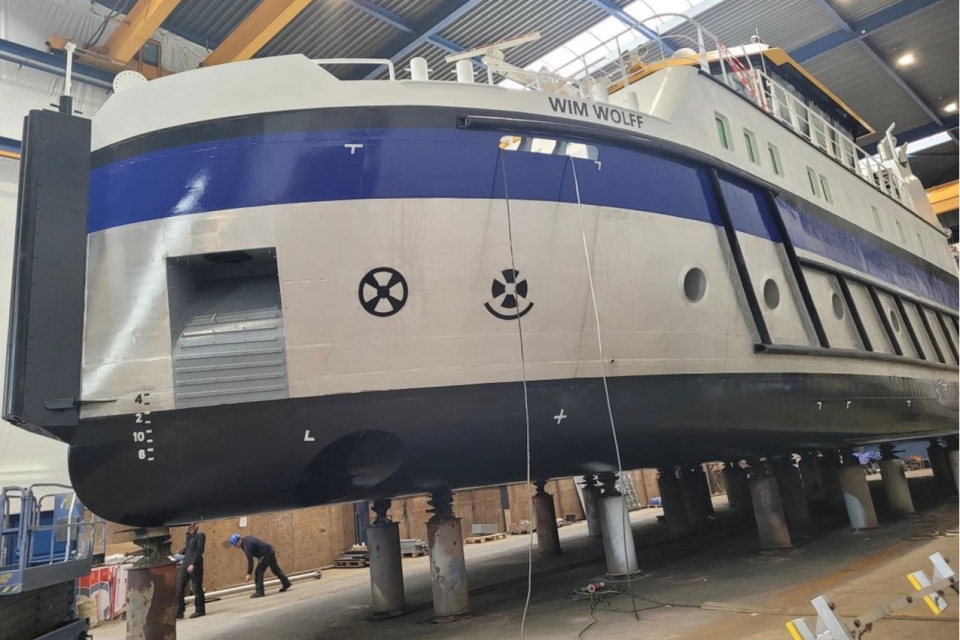The new research vessel (RV) Wim Wolff for the Royal Netherlands Institute for Sea Research (NIOZ) is almost ready for its launch. The new ship is currently under construction at Thecla Bodewes Shipyards in Harlingen.
The RV Wim Wolff is a new shipbuilding project for the Dutch national research fleet. The fleet is owned and operated by the National Marine Facilities (NMF), a department of the NIOZ. The NMF fleet consists of three vessels capable of conducting research from the shallow coastal waters out into the open ocean.
The RV Wim Wolff is intended to replace the Wadden Sea research vessel RV Navicula, and with its shallow draught of 1 metre it is specifically designed for overnight voyages for research in the Wadden Sea, the Zealand delta or the coastal zone.
With a permanent crew of four, the RV Wim Wolff will offer state-of-the-art facilities for a maximum of twelve passengers, and is equipped with onboard dry and wet lab facilities. The vessel also has room for two customised lab containers on the working deck.
Delivery is planned by the end of the fourth quarter of 2023. The launch was originally planned for September, but just before summer, NIOZ announced progress was not going entirely according to schedule. So whether a September launch is still on the cards, is not clear yet, but the organisation has now revealed the launch is not far off.
Also read: NIOZ: It is too early for commercial deepsea mining
Work update
Just before the summer holidays, NIOZ published its last building update for the Wim Wolff. At the time, builders were continuing work inside the cabins and the two rudders had been mounted behind the two propulsion propellers.
In addition, the A-frame had been installed. The starboard and port-side deck cranes and the J-frame were also mounted topside. The large Heila deck crane is due for delivery in October.
The A-frame is the vessel’s workhorse, and is suitable for lifting the heaviest loads of up to 5000 kg aboard, such as bottom trawls for collecting samples from the ocean floor. The J-frame is intended specifically for loads of up to 2500 kg over the side, such as water samples. Both deck cranes are suitable for smaller, quick tasks up to 600 kg, such as raising or lowering rubber boats.
Also read: VIDEO: New NIOZ research vessel Wim Wolff moves out of production hall
In July, all of the cables, guide blocks and winches still needed to be installed on both the A-frame and the J-frame, but the winches had been installed on the A-frame. Anchors and gears had also been delivered but had yet to be mounted on the vessel.
Furthermore, the radar/navigation mast had already been protected from the elements and fitted with the necessary navigation lights, antennas and radar scanners. The mast has been placed on the wheelhouse to connect the power supply and electrical components.
Picture by NIOZ (LinkedIn page).
Also read: Dutch maritime industry outraged that Spanish yard will build new NIOZ ship








